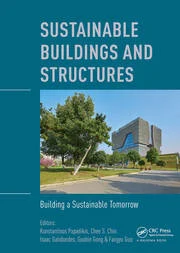Options
Potential for the design of an energy saving facade system using agglomerated cork: Implications in subtropical climates
Date Issued
2019
Author(s)
Faculty of Arts and Humanities
Abstract
Agglomerated cork is a known material by its contribution to the sustainment of the environment, not only because it is a wholly natural material, without chemical additives, but also because its industrial process of production results from the lowest quality residues of cork or industrial waste material, unsuitable for other applications. It is a reusable material, which means, the cork facade elements can be converted into a new agglomerated material, demonstrating a huge potential for adaptation to existing buildings following a reversible process. It is durable, lightweight, water resistant, low-cost material, some of the properties that may qualify it as suitable for application in large surfaces of vertical construction façades. The aim of this article is to analyze the mechanical, thermal and acoustic characteristics of cork composites against site-specific climatic conditions of subtropical climates and its suitability as an external coating system for residential buildings with the goal to reduce the energy consumption for cooling the inner environment. In high-density cities like Guangzhou, Shenzhen and Hong Kong the majority of the buildings starting from the 1960s until early 21st century (Brach & Song 2006), did not integrate thermal insulation systems into external walls, producing a high level of heat transfer through the external façade from the outside environment during spring and summer seasons. Due to the extremely fast urban growth of the modern Chinese city, little importance is given to the quality of the external walls in current residential building construction. For at least during six months each year the consumption of energy due to air conditioning in Guangdong province is extremely high. The study concluded that substantial energy could be saved by implementing an external coating upgrade to existing buildings. Additionally, this study details the result obtained through software for energy simulations (Design Builder, ENVI-met) demonstrating the potential of this project to produce homogeneous and comfortable inside temperatures, which cools the indoor ambient temperature in summer time.
File(s)
No Thumbnail Available
Name
Potential for the design of an energy saving facade system using agglo.pdf
Size
173.46 KB
Format
Adobe PDF
Checksum
(MD5):da5cdf3859639dae984a93729dd4a4b8
Loading...
Name
cover
Size
9.61 KB
Format
WebP
Checksum
(MD5):ae46609860edd077901c62834e956ae1